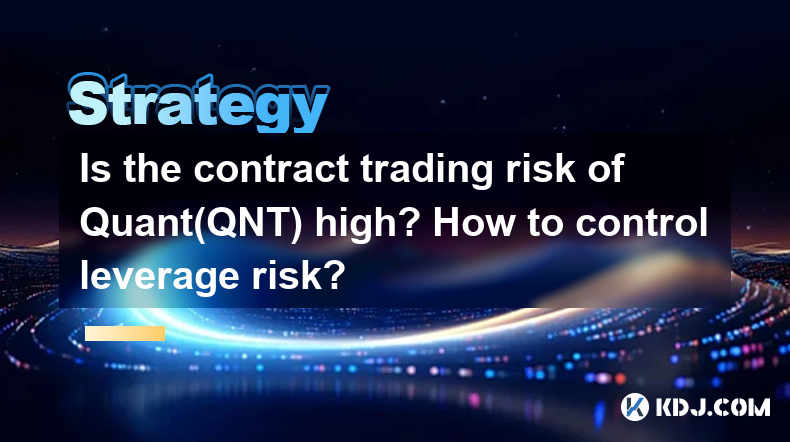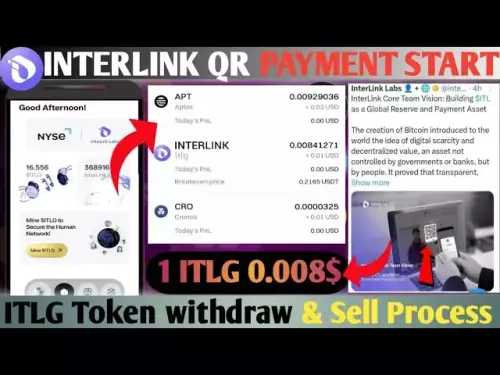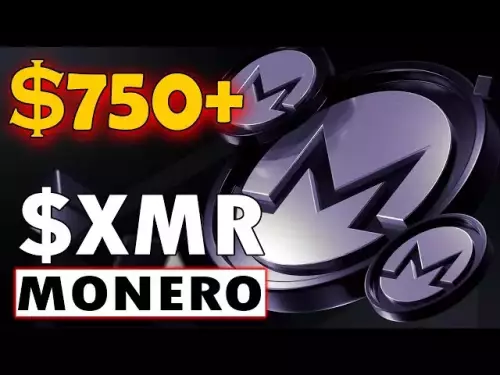-
 bitcoin
bitcoin $107208.295278 USD
-1.54% -
 ethereum
ethereum $3874.629914 USD
-1.38% -
 tether
tether $1.000440 USD
0.03% -
 bnb
bnb $1089.465513 USD
-5.53% -
 xrp
xrp $2.327672 USD
-1.65% -
 solana
solana $184.766505 USD
-0.73% -
 usd-coin
usd-coin $1.000076 USD
0.02% -
 tron
tron $0.310632 USD
-1.99% -
 dogecoin
dogecoin $0.187615 USD
-1.60% -
 cardano
cardano $0.633389 USD
-2.75% -
 ethena-usde
ethena-usde $0.999553 USD
0.03% -
 hyperliquid
hyperliquid $35.608231 USD
-4.13% -
 chainlink
chainlink $16.876114 USD
-3.98% -
 stellar
stellar $0.312239 USD
-0.91% -
 bitcoin-cash
bitcoin-cash $473.262969 USD
-7.09%
Is the contract trading risk of Quant(QNT) high? How to control leverage risk?
QNT's contract trading carries high risk due to volatility; control leverage by using low levels, stop-loss orders, and diversifying your portfolio.
Apr 30, 2025 at 09:14 pm

Is the contract trading risk of Quant(QNT) high? How to control leverage risk?
The world of cryptocurrency trading is fraught with various risks, and contract trading, particularly with high-leverage instruments like Quant (QNT), can significantly amplify these risks. Understanding the inherent risks associated with QNT contract trading and learning how to effectively manage leverage is crucial for any trader looking to navigate this volatile market.
Quant (QNT) is a cryptocurrency that powers the Overledger network, a platform designed to facilitate interoperability between different blockchain systems. Given its unique role and relatively smaller market cap compared to major cryptocurrencies, QNT can experience significant price volatility. This volatility is a double-edged sword in contract trading, offering the potential for high returns but also posing substantial risk.
Understanding Contract Trading Risks with Quant (QNT)
Contract trading, also known as futures trading, involves agreements to buy or sell an asset at a future date at a predetermined price. When trading QNT contracts, traders are essentially betting on the future price movements of QNT. The high volatility of QNT can lead to significant price swings, which can result in substantial gains or losses.
The primary risk associated with QNT contract trading is the potential for rapid and significant price movements. Since QNT is not as widely traded as more established cryptocurrencies like Bitcoin or Ethereum, its price can be more susceptible to manipulation and sudden market shifts. This can lead to liquidation risks where traders are forced to close their positions at a loss due to insufficient margin.
Leverage is another critical factor that amplifies the risk in QNT contract trading. Leverage allows traders to control a larger position with a smaller amount of capital, but it also increases the potential for losses. If the market moves against a leveraged position, the losses can exceed the initial investment, leading to a margin call and subsequent liquidation.
How to Control Leverage Risk in QNT Contract Trading
Effective risk management is essential for controlling leverage risk in QNT contract trading. Here are some strategies and steps traders can take to mitigate their exposure:
Use Appropriate Leverage Levels
Choosing the right leverage level is crucial. While higher leverage can amplify gains, it also increases the risk of significant losses. It's advisable to start with lower leverage levels, especially for beginners.
- Assess your risk tolerance: Understand how much risk you are willing to take on before entering a trade.
- Start with lower leverage: Begin with a leverage ratio of 2x to 5x to get a feel for the market movements without exposing yourself to excessive risk.
- Adjust leverage based on market conditions: If the market is highly volatile, consider reducing your leverage to protect your capital.
Implement Stop-Loss Orders
Stop-loss orders are essential tools for managing risk in leveraged trading. They automatically close a position when the price reaches a predetermined level, helping to limit potential losses.
- Set realistic stop-loss levels: Determine a stop-loss level that aligns with your risk tolerance and trading strategy.
- Regularly review and adjust stop-loss orders: As the market moves, you may need to adjust your stop-loss levels to lock in profits or prevent further losses.
Diversify Your Portfolio
Diversification can help mitigate the risk associated with QNT contract trading. By spreading your investments across different assets, you can reduce the impact of a single asset's volatility on your overall portfolio.
- Include a mix of cryptocurrencies: In addition to QNT, consider trading other cryptocurrencies with different risk profiles.
- Balance between high and low-risk assets: Allocate a portion of your portfolio to more stable assets to balance the risk of high-leverage trading.
Monitor Market Conditions and News
Staying informed about market conditions and news related to QNT can help you make more informed trading decisions. Market sentiment and regulatory news can significantly impact QNT's price, and being aware of these factors can help you anticipate potential price movements.
- Follow reputable crypto news sources: Stay updated with the latest news and analysis from trusted sources.
- Use technical analysis tools: Utilize charts and indicators to identify trends and potential reversal points in QNT's price.
Practice Risk Management Techniques
Implementing sound risk management techniques can help you control leverage risk and protect your trading capital.
- Use position sizing: Determine the size of each trade based on your total capital and risk tolerance.
- Maintain a risk-reward ratio: Aim for trades with a favorable risk-reward ratio, where the potential reward justifies the risk taken.
- Keep a trading journal: Record your trades, including entry and exit points, to analyze your performance and identify areas for improvement.
Additional Considerations for QNT Contract Trading
When trading QNT contracts, it's essential to consider the specific characteristics of the cryptocurrency and the platform you are using. Different exchanges may offer varying levels of leverage and have different margin requirements, which can impact your trading strategy.
Understand the Platform's Margin Requirements
Each trading platform has its own set of rules regarding margin requirements and leverage. Understanding these rules is crucial for managing your risk effectively.
- Check the minimum margin requirements: Ensure you have enough capital to meet the platform's minimum margin requirements.
- Be aware of margin calls: Know how the platform handles margin calls and what actions you need to take to avoid liquidation.
Consider the Liquidity of QNT
The liquidity of QNT can affect the ease with which you can enter and exit positions. Low liquidity can lead to wider bid-ask spreads and slippage, which can impact your trading results.
- Monitor trading volumes: Check the trading volume of QNT on the platform to gauge its liquidity.
- Avoid trading during low liquidity periods: Be cautious when trading during times when the market is less active, as it can be harder to execute trades at desired prices.
Use Demo Accounts for Practice
Before risking real capital, consider using a demo account to practice trading QNT contracts. This can help you familiarize yourself with the platform and test your trading strategies without financial risk.
- Choose a platform with a demo account: Select a trading platform that offers a demo account for practice.
- Simulate real trading conditions: Use the demo account to simulate real trading scenarios and test your risk management strategies.
Frequently Asked Questions
Q: Can I trade QNT contracts on any cryptocurrency exchange?A: Not all cryptocurrency exchanges offer QNT contract trading. You should check with specific exchanges to see if they support QNT futures and what leverage options they provide.
Q: How does the volatility of QNT compare to other cryptocurrencies?A: QNT can be more volatile than major cryptocurrencies like Bitcoin and Ethereum due to its smaller market cap and less liquidity. This volatility can lead to larger price swings, which traders need to consider when entering positions.
Q: What are the tax implications of trading QNT contracts?A: The tax implications of trading QNT contracts can vary depending on your jurisdiction. Generally, profits from futures trading are subject to capital gains tax. It's advisable to consult with a tax professional to understand the specific tax rules that apply to your situation.
Q: Are there any specific tools or indicators recommended for trading QNT contracts?A: Traders often use a variety of technical indicators to analyze QNT's price movements. Popular tools include moving averages, the Relative Strength Index (RSI), and Bollinger Bands. It's essential to combine these tools with fundamental analysis and market news to make informed trading decisions.
Disclaimer:info@kdj.com
The information provided is not trading advice. kdj.com does not assume any responsibility for any investments made based on the information provided in this article. Cryptocurrencies are highly volatile and it is highly recommended that you invest with caution after thorough research!
If you believe that the content used on this website infringes your copyright, please contact us immediately (info@kdj.com) and we will delete it promptly.
- Bitcoin, Crypto Coins, and 2025: What's the Hype?
- 2025-10-19 06:25:15
- Dogwifhat's Price Stabilization: Is a Reversal Rally on the Horizon?
- 2025-10-19 06:45:13
- Uniswap's UNI Navigates Open Interest Dip: What's Next?
- 2025-10-19 06:45:13
- Solana, TVL, and Meme Coins: A New Era?
- 2025-10-19 06:25:15
- Steve Jobs, American Innovation, and a $1 Coin: A New York State of Mind
- 2025-10-19 06:50:11
- Meme Coins: Buy Now or Wait? Presale Trends and Future Insights
- 2025-10-19 06:30:15
Related knowledge

Practical parameter settings for a Bitcoin multi-timeframe moving average system
Sep 18,2025 at 10:54pm
Optimizing Timeframe Combinations for Bitcoin Trading1. Selecting appropriate timeframes is crucial when building a multi-timeframe moving average sys...

How can I filter out false breakouts in Dogecoin high-frequency trading?
Sep 22,2025 at 01:00am
Understanding False Breakouts in Dogecoin Trading1. A false breakout occurs when Dogecoin's price appears to move beyond a defined support or resistan...

Techniques for identifying tops and bottoms in the Bitcoin on-chain NVT model
Sep 20,2025 at 07:54pm
Understanding the NVT Model in Bitcoin Analysis1. The Network Value to Transactions (NVT) ratio is often described as the 'P/E ratio' of the cryptocur...

What does the surge in open interest in Bitcoincoin futures mean?
Sep 20,2025 at 11:18pm
Understanding the Surge in Dogecoin Futures Open Interest1. A surge in open interest within Dogecoin futures indicates a growing number of active cont...

How can I use the Ethereum USDT premium to gauge market sentiment?
Sep 18,2025 at 11:55pm
Understanding the Ethereum USDT Premium1. The Ethereum USDT premium refers to the price difference between USDT (Tether) traded on Ethereum-based plat...

What should I do if Ethereum staking yields decline?
Sep 20,2025 at 06:18am
Understanding the Causes Behind Declining Ethereum Staking Yields1. The Ethereum network transitioned to a proof-of-stake consensus mechanism with the...

Practical parameter settings for a Bitcoin multi-timeframe moving average system
Sep 18,2025 at 10:54pm
Optimizing Timeframe Combinations for Bitcoin Trading1. Selecting appropriate timeframes is crucial when building a multi-timeframe moving average sys...

How can I filter out false breakouts in Dogecoin high-frequency trading?
Sep 22,2025 at 01:00am
Understanding False Breakouts in Dogecoin Trading1. A false breakout occurs when Dogecoin's price appears to move beyond a defined support or resistan...

Techniques for identifying tops and bottoms in the Bitcoin on-chain NVT model
Sep 20,2025 at 07:54pm
Understanding the NVT Model in Bitcoin Analysis1. The Network Value to Transactions (NVT) ratio is often described as the 'P/E ratio' of the cryptocur...

What does the surge in open interest in Bitcoincoin futures mean?
Sep 20,2025 at 11:18pm
Understanding the Surge in Dogecoin Futures Open Interest1. A surge in open interest within Dogecoin futures indicates a growing number of active cont...

How can I use the Ethereum USDT premium to gauge market sentiment?
Sep 18,2025 at 11:55pm
Understanding the Ethereum USDT Premium1. The Ethereum USDT premium refers to the price difference between USDT (Tether) traded on Ethereum-based plat...

What should I do if Ethereum staking yields decline?
Sep 20,2025 at 06:18am
Understanding the Causes Behind Declining Ethereum Staking Yields1. The Ethereum network transitioned to a proof-of-stake consensus mechanism with the...
See all articles










































































